2.2. Germany
Rich deposits of mineral (hard) coal, especially in the areas of the Ruhr
and the Saar, allowed the development of large coal mines in Germany.
Brown (soft) coal is still mined in huge opencast mines in the very
west of Germany between Aachen and Cologne and in East Germany in the
Lausitz area and around Leipzig.
2.2.1. Goldenberg Werk
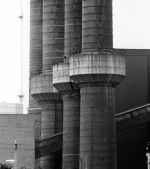 |
The famous 'Goldenberg Werk' power plant started operation in 1914.
It was Europe's largest power plant at the the end of the first world war.
Once the twelve chimneys were called the 'twelve apostles'.
Only four of them (the four evangelists?) do still exist.
|
2.2.2. Briquette Plant 'Brikettfabrik Wachtberg', Frechen
 |
On the occasion of the Open Day at the 100th anniversary
of the briquette plant 'Wachtberg' in Frechen the following
photographs show a few of the many nice spots of this old
factory, which is still young and full of life.
|
2.2.3. Briquette Plant 'Carl'
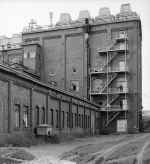 |
The briquette plant 'Brikettfabrik Carl' is an other example for
the ignorance of the German authorities.
When I took the following photographs, the excavators were already
demolishing the beautiful buildings. The plant was still
complete with all it's machinery inside, including
steam-driven briquette presses and drying equipment.
The official statements praise the 'innovative concept'
of the factory's 'reuse', ignoring
the fact, that nobody will ever be able to understand
the process of briquette production after the 'conversion',
which will just leave a few unrelated fragments of the
plant.
|
2.2.4. Brown Coal Industry, Leipzig Area
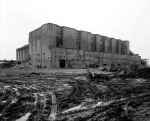 |
Between 1938 and 1944 a power plant, briquette factories
and several chemical plants were put into operation
at Espenhain. The power plant worked until 1996, and
currently demolition is in progress.
|
2.2.5. Brown Coal Industry, Lausitz Area
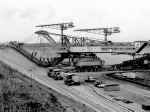 |
Bucket chain excavators still dominate the brown coal (lignite) opencast
mines in the Lausitz area.
Huge moveable bridges, each of them weighing more than
10000 tonnes, transport the overburden material across the mine.
|
2.2.6. Mine and Coke Plant Anna
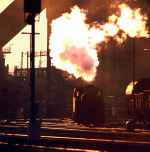 |
The mine and cokeplant 'Anna' used to be a wonderful place.
I still feel a bit like beeing back home in Alsdorf, when I
smell the fumes of a coke plant and, yes, I do really miss
that dirty stinky place, the air filled with smoke, the
rhythmic music of the steam locomotives moving tonnes and
tonnes of coke, the light of the coke illuminating
the beautiful silhouette of the plant ...
|
2.2.7. Basalt Quarries in the Mayen Area
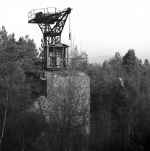 |
Basalt has been quarried in the Eastern Eifel area near Mayen and Ettringen since Roman times.
A large number of seemingly forgotten cranes can be found in the abandoned quarries,
sometimes overgrown with bushes and birch trees, sometimes collapsed, sometimes
reduced to skeletons.
|
2.2.8. Coal Mines in the Ruhr Area (Zechen an der Ruhr)
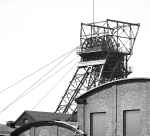 |
The Ruhr area used to be one of the world's largest collection of industrial
buildings. Hundreds of mines with beautiful headgears crowded the area.
Although many of the old pits were already disused when I visited the
Ruhr area in 1990/91, I could still find quite a few of them.
Don't expect to find 'artistic' or near 'perfect' pictures in this
section. The intention is to show the beauty and the variety of
an industrial building, which once was a synonym for coal, for
energy and for wealth. (NOTE: more images will be added soon.)
|
2.2.9. Pyrite Mine Sachtleben (Schwefelkiesgrube)
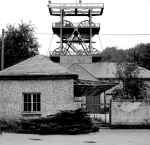 |
This pyrite mine was one of the last German ore mines in production.
|
2.2.10. Coal Mines in the Aachen Region (Aachener Kohlerevier)
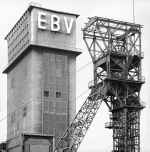 |
Names like 'Gouley', 'Anna', 'Adolf', 'Carl Alexander', 'Emil Mayrisch',
'Carolus Magnus' and 'Sophia Jacoba' once were synonyms for coal mining
in the area North of Aachen. 'Sophia Jacoba' in Hückelhoven closed in 1997
as the last surviving pit of the area.
|
2.2.11. Zeche Zollverein, Schacht 12
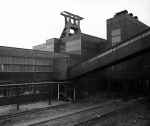 |
The famous coal mine 'Zeche Zollverein 12' designed by the
architects Schupp and Kremmer.
|
2.2.12. Coke Plant at Rheinhausen Steelworks
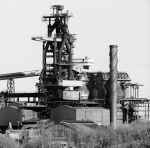 |
The abandoned coke plant is virtually all, what has remained from the
former Krupp steelworks at Rheinhausen.
|
© Harald Finster, contact me




